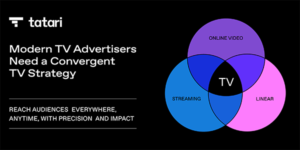In total, 125 d-to-c brands spent 60 percent more on TV commercials in 2018 than in the year prior, according to VAB
Direct-to-consumer brands have added $1.4 billion to the TV ad marketplace over the past year, according to research out of the Video Advertising Bureau.
In total, 125 d-to-c brands, which the VAB defines as companies selling products directly to customers without third-party retailers, wholesalers or other middlemen, spent $3.8 billion on TV in 2018, a 60 percent increase from the year prior, according to the study. Of course, this still remains just a sliver of the overall $70 billion TV ad marketplace.
This comes as major TV network groups like NBC Universal, A&E Networks and Viacom introduce ad solutions and other capabilities geared toward wooing direct-to-consumer brands, which have typically relied on digital advertising, to TV.
These opportunities typically come with a lower price point than what it usually costs to advertise on TV. It’s also helped that TV networks have been utilizing data and targeting in ways that more closely resemble how brands buy advertising on digital.
Of the 63 emerging brands studied by the industry organization, 41 were either new TV advertisers in 2018 or were existing advertisers that more than doubled their TV ad spend.
According to the VAB, most emerging d-to-c brands reported a triple-digit lift in search queries and non-paid online video views related to their TV ads. They also saw an 84 percent surge on average in unique website traffic within the first month of their TV ads running.
And a sample of five emerging d-to-c companies that purchased TV advertising for the first time in 2018 saw revenue increase anywhere from 25 percent to 800 percent over 2017.
Touch of Modern, an e-commerce website and app for men to discover lifestyle products, posted a 33 percent increase increase in sales from 2017 to 2018 after increasing its TV campaign spending.
And among more established d-to-c brands, Peloton saw its revenue grow 106 percent after upping its TV campaign spending in 2018, according to the VAB.


